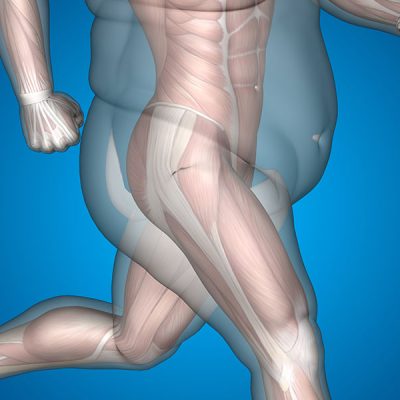
Exercise-mimic molecule may help treat diabetes and obesity
A new molecule that acts as an exercise mimicker could potentially treat type 2 diabetes and obesity, according to scientists from the University of Southampton.
The new molecule, compound 14, was developed by Professor Ali Tavassoli. The molecule blocks the function of the cellular enzyme ATIC, which holds an important role in metabolism. The blocking of ATIC leads to an accumulation of a molecule called ZMP (5-aminoimidazole-4-carboxamide ribonucleotide) in cells, activating the cells’ main energy sensor, an enzyme called AMP-activated protein kinase (AMPK) that monitors and responds to changes in the intracellular AMP/ATP ratio. Activation of AMPK causes the cells to believe that they are low in energy, which forces the cells to increase energy levels by boosting the metabolism and increasing the uptake of glucose from the blood stream.
The study, recently published in Chemistry and Biology, tested compound 14 on a mouse model of metabolic syndrome to show therapeutic viability.
“The issue is that established drugs do not successfully enable patients with type 2 diabetes to achieve glycaemic control and some can even result in weight gain, a leading factor driving the diabetes epidemic. In contrast, this new molecule seems to reduce glucose levels and at the same time decrease body weight, but only if the subject is obese,” says co-author Dr. Felino Cagampang.
This study still warrants further research to determine how compound 14 works on treating type 2 diabetes and obesity in mice, and if this can be applied to humans, particularly if there are fewer side effects.




